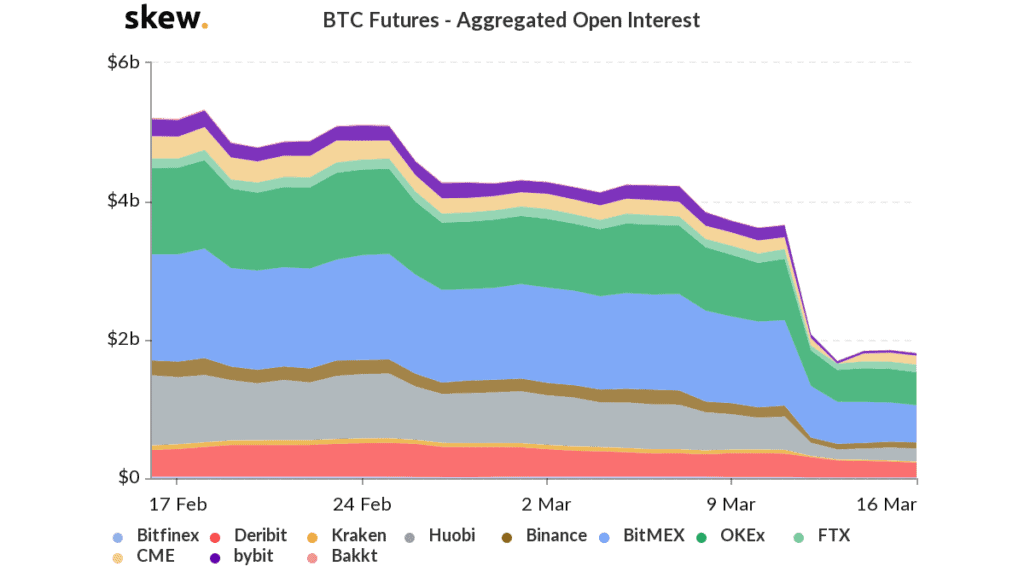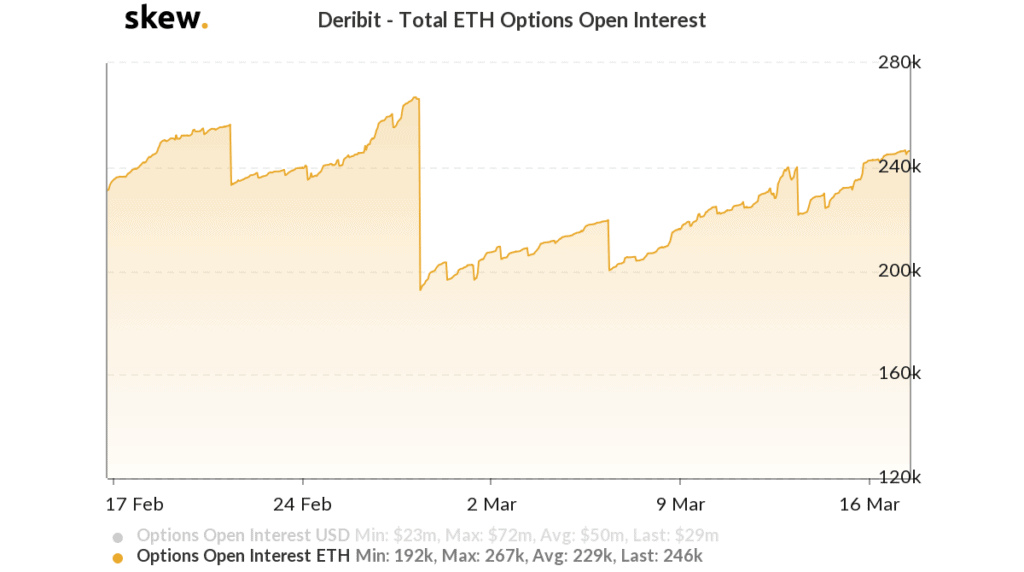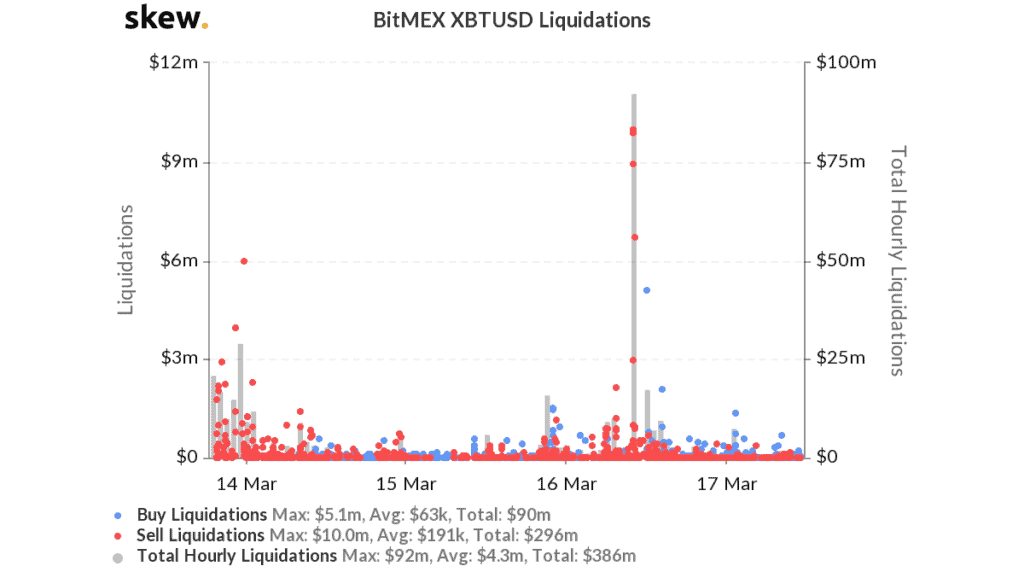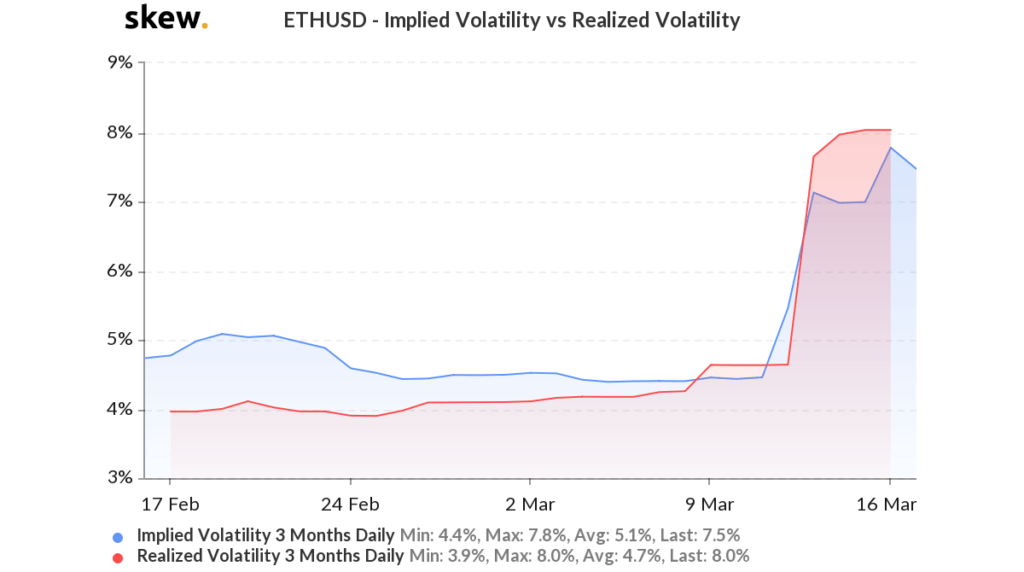A sense of panic and instability has been largely present in the digital asset industry over the past few days after a massive sell-off surfaced on the 12th of March, Bitcoin registered a massive decline of over 50 percent as its valuation slumped from $7400 to $3800 in the span of 24-hours.
Ethereum, the second-largest asset that started witnessing a strong correlation factor towards the end of February, followed suit and registered a downturn of 64 percent itself.
At press time, Ethereum’s entire positive gains of 2020 were already nullified but the derivatives market indicated a contradictory trend at the moment.

According to the chart above, it can be observed that the open-interest on Ethereum has drastically dipped since Mid-February. Major exchanges such as Kraken, OKEx, and Bitmex were also incurring a drop in OI of more than 60 percent, as the market indicated in an extreme fear situation.
The OI was reportedly around $910 million on 14th February but since then, it has depreciated down to $337 million on 16th March.

However, a completely contradictory scenario was observed in Ethereum’s options trading. From the charts above, it can be pictured that the total ETH options open-interest has risen periodically since the start of March, and the spot value slump on 12th March did not have an impact on its incline trajectory.
At press time, the OI on Deribit’s ETH options was above the $245k range. A similar range was observed back in February and it is important to that note that the market was substantially bullish during that time. However, Deribit’s ETH options volume continued to plummet significantly. At the present time, the total ETH options volume was about $200K, which was incredibly less than the $12 million volumes noticed on 12th March.
Although ETH futures seemed bearish in comparison to the options market, the interest of traders remains on a neutral side,

Data from Bitmex suggested that in the past 24-hours over $5.2 million liquidations have taken place on ETHUSD and buyers had an equal level of dominance during this trend. According to the data above, around $2.6 million were buy liquidations and then rest was sell liquidations of around $2.6 million as well.
However, Ethereum continued to tread on thin ice with respect to volatility.

On observing the above skew chart, it can be analyzed that the realized volatility remained above the implied volatility at press time. Realized volatility is basically the level of turbulence indicated in the current market and implied volatility is the instability expected.
At press time realized volatility was about 8 percent and implied volatility was about 7.6 percent. This may suggest that the chances of another price swing remain fairly high in the charts and Ethereum may entertain a price point below the three-digit number.
With the global economy currently dealing with liquidity constraints due to the Covid-19 spread, traders and investors may not remain fervently active in the derivatives market, if the valuation continues to slump.

